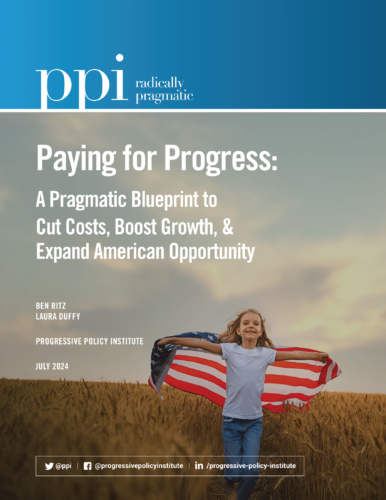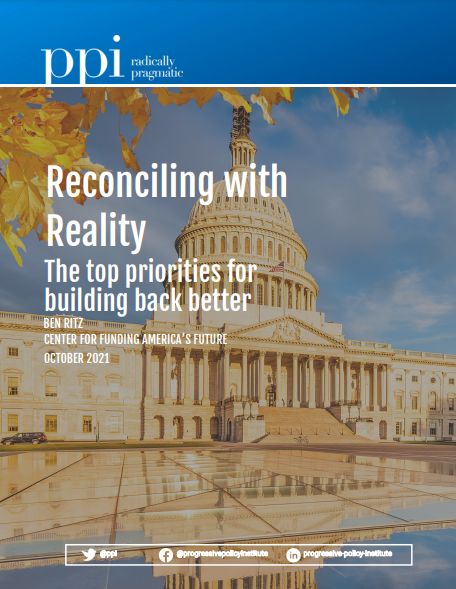February marked the one-year anniversary of the Norfolk South train derailment in East Palestine, Ohio. Residents, driven out by a controlled burn of spilled chemicals, have mostly returned to their homes, and the town is working towards a return to normalcy. Norfolk Southern just settled a class-action lawsuit for $600 million without admitting liability, and no deaths or injuries were reported in the crash itself. Nevertheless, the long-term health and environmental impacts of the controlled burn remain to be seen.
In the immediate wake of the crash, local residents, and Center for Disease Control and Prevention officials experienced severe ailments associated with chemical exposure. One year later, residents report continuing health impacts and worries about long-term risks persist. Preliminary results from the National Transportation Safety Board’s investigation have not shown evidence of rail industry negligence in the crash, but the derailment has prompted serious questions about the need for more safety regulations.
Now, the freight rail industry faces several different regulatory pressures, including an understandable call for safety improvements such as increasing the number of trackside sensors. These devices span the rail network because of voluntary industry action, but some policymakers have proposed stricter regulations that would require more sensors to be installed.
Along with these safety-oriented proposals, however, has come a drive towards increased economic regulations that would impose additional costs and controls on railroads and reduce incentives for investment. Remarks from Surface Transportation Board (STB) chairman Martin Oberman and proposed legislation like the Reliable Rail Service Act are part of a broader push to redefine railroads’ obligations as common carriers, which dictate certain obligations for service quality, frequency, and pricing.
Railroads’ common carrier status has been a critical factor in the development, structure, and operations of the industry since it was first defined in the late 19th century, and changes to the economic and regulatory burden that railroads face could substantially alter the competitive balance of the market as it stands today. Though the push for a redefinition of common carrier status was underway prior to the derailment in East Palestine, these efforts have accelerated in its wake, with stakeholders in favor of these stricter service obligations (like shippers) seizing on the public’s anger towards railroads’ safety practices to further advocate for the changes.
In addition, California is putting pressure on the industry to quickly reduce emissions from diesel locomotives and pursue “zero emission technology.” Paradoxically, implementing these economic and environmental regulations could make it more difficult for the railroad industry to afford the new safety equipment while risking increased emissions if shippers opt for truck transportation instead, which is currently less environmentally efficient. Increasing technological capabilities, along with lowering sensor costs to make data collection, monitoring, and analysis more accessible, represent a meaningful path forward to safer and smarter rail transportation.
The Freight Rail and Trucking Industries
A backbone of American shipping and logistics, the American freight rail system is one of the most robust in the world. Following the partial deregulation of the industry with the 1980 Staggers Rail Act, the industry has grown to be an essential method of freight transportation. In 2023, freight railroads transported shipments valued at $403 billion, and six railroads (including Norfolk Southern) were classified as Class I, indicating annual revenue of more than approximately $500 million.
Productivity has also risen in recent years, outpacing freight trucking, the industry’s primary competitor (and customer). According to the Bureau of Labor Statistics, labor productivity increased by 15.9% between 2019 and 2022 for the rail transportation industry, while productivity in truck transportation increased by only 4%. Producer prices have also risen more slowly in the rail industry, rising only 17.1% between 2019 and 2023 compared to the trucking industry’s 27.8% increase during the same period.
Compared to the trucking industry, trains today emit far less pollutants than trucks, and shifting trips from roads to rails can reduce transportation emissions. While the efficiency advantage of rail may decrease as trucks adopt technologies like autonomization and electrification in the future, trains are an essential and efficient mode of transportation, whose continued use help to minimize the carbon footprint of transportation.
Safety in the Freight Rail Industry
Unlike airlines or road transportation, railroads own and maintain the tracks and infrastructure to support their network, incurring significant capital costs in doing so. With an average of $23 billion spent annually on capital expenditures and maintenance by Class I railroads, the industry has made significant strides in safety in the past two decades. As the Association of American Railroads highlighted in a recent press release, Federal Railroad Administration (FRA) data indicates that since 2000, per carload hazmat accident rates have fallen 75% to their all-time low; Class I railroads’ mainline accident rate is down 42%; and derailment rates have dropped nearly 30% for all railroads through 2023.
Though the NTSB is not set to rule officially on the final cause of the February 2022 East Palestine derailment until June, preliminary reports on the crash have noted the failure of an overheated wheel bearing and its detection using a hot bearing detector (HBD). HBDs, which are sensors placed along tracks to detect, report, and alert operators of overheating components, have grown in popularity and adoption in recent years. In East Palestine, HBDs successfully detected and notified the train’s operators of an overheating bearing, but while attempting to stop the train to survey the issue, the component failed entirely, and the train derailed. Under current regulation, both the HBDs and train operators functioned and acted as intended, but the approximately 20-mile distance between the sensors meant that the bearing’s temperature of 253 degrees above ambient — well above the alert threshold of 170 degrees — was not detected until it was too late.
Hot bearing detectors are widely acknowledged as an important train safety measure. Today, HBDs are in use across the network, but in some places the gaps between sensors exceed the optimal distance of 15 miles that a 2017 study concluded provided maximum safety benefits. The Federal Railroad Administration, which enforces rail safety regulations, issued and later amended a safety advisory calling for reviewing and expanding HBD systems and their associated policies to better detect and prevent similar accidents moving forward.
Railroads have also voluntarily taken steps to improve railroad safety. The Association of American Railroads, representing all Class I railroads, announced in the wake of the East Palestine derailment that approximately 1,000 new HBDs would be installed across the country to close existing gaps in the rail network. Once installed, these sensors will ensure that the gaps between sensors are no more than 15 miles. These improvements, along with lowered action temperature thresholds and improved data reporting and sharing, represent meaningful investments in improving railway safety in the United States.
This issue shows the crucial link between safety and technology. Promising advanced technologies, like vibration detectors, can proactively monitor component integrity with greater accuracy and detail than HBDs, which detect failures once they occur. However, these vibration detectors remain extremely limited in their adoption because of their prohibitive costs. Improvements in technology, manufacturing, and production at scale could make these advanced sensors more financially accessible to railroads. As regulatory reports and guidance in the wake of the East Palestine derailment concluded, improving both data collection and the capacity to analyze it are areas for future improvement. Pairing manufacturing improvements and falling costs with a drive for more robust data collection and processing will pay dividends for future safety and efficiency.
Economic Regulation and the Surface Transportation Board
Oddly enough, the drive for additional regulations to improve safety has become a vehicle for calls to further regulate railroad prices and customer relations.
Broadly, the Surface Transportation Board, the agency responsible for regulating the economic functions of freight railroads, has proposed regulations, like updated rules for mandatory reciprocal switching and new requirements for determining market dominance, that impose further obligations (and consequently increased costs) for rail carriers. Mandatory reciprocal switching grants shippers who would otherwise have access to only a single carrier access to others by mandating that railroads offer to switch shippers’ cars to another carrier’s network in the case of poor service. The policy, which advocates say increases competitiveness and provides a remedy to anti-competitive behavior by railroads towards captive shippers, has long been a topic of contention tied closely to the industry’s complex history of mergers and consolidation.
While mandatory reciprocal switching can provide major benefits as a remedy for shippers lacking choice or bargaining power, if implemented poorly, these regulations can lead to service inefficiencies and delays, with the potential to increase costs and worsen performance elsewhere in the system. The safety measures and logistics associated with reciprocal switching can introduce additional operational complexity, which increases costs for rail carriers. However, as experts have expressed, reciprocal switching can be accommodated in an economically viable manner if designed and executed properly. The STB’s recently proposed rules are well-intentioned in their goal of clarifying existing complex regulations and remedying poor service on less-used routes, and it is likely to be invoked on a limited number of routes based on the newly designed eligibility tests.
Looking forward, the STB should carefully consider the impacts on profitability and competition for the freight rail industry as they weigh new economic and competition policies like reciprocal switching. Particularly as new autonomous technologies threaten to reshape the competitive landscape for both the freight rail and trucking industries, regulators must ensure that the regulatory burden does not prevent railroads from remaining competitive in a fast-moving and dynamic market.
California’s Proposed Environmental Regulations
In April 2023, California’s Air Resources Board (CARB) enacted first-of-its-kind rules restricting carbon emissions from trains that would significantly impact operating costs and service for freight railroads. The rules, which include phasing out older locomotive engines and banning many trains from idling for more than 30 minutes, are well-intentioned. However, locomotives make up an extraordinarily small percentage of California’s emissions – just 0.4% of the state’s total carbon dioxide emissions in 2021 and only 0.9% of the transportation sector’s total carbon dioxide emissions, according to CARB’s carbon dioxide inventory database. The high costs associated with compliance would help to boost efficiency and reduce emissions but represent only a miniscule slice of a much larger pie when considering the broader context of the state’s carbon footprint.
Conclusion
Ensuring that railroads remain well-resourced to allow for investment in safety-boosting technologies is critical, while also acknowledging that rules like California’s, which mandates a rapid transition to zero-emission locomotives, have the potential to divert investment dollars away from safety. Regulators should not rush to enact heavy-handed regulations by riding the coattails of well-reasoned changes to improve safety. Regulation does have a role to play in the market and can help to ensure a healthy balance of competition, efficiency, and coverage, but these policies should stand on their own economic merits. With the burdens of maintenance and safety falling on railroads, allowing carriers to remain profitable and competitive is critical for building a safe and functional system for years to come.





